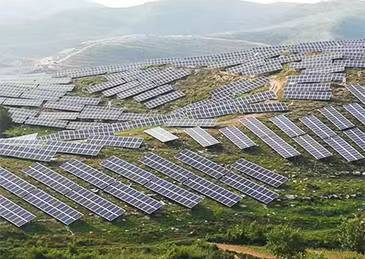On May 14, local time, the White House announced additional tariffs on a series of Chinese products including solar cells, electric vehicles, computer chips and medical products.
According to a White House press release, under Section 301 of the Trade Act of 1974, photovoltaic cells used to manufacture solar panels will be increased from 25% to 50%. The tariff on electric vehicles will be increased from 25% to 100%, the tariff on lithium-ion electric vehicle batteries and other battery components will be increased from 7.5% to 25%, and the tariff on "certain" key minerals will be increased from zero to 25%.
The main tax on the photovoltaic sector in the United States this time is that the tariff rate on solar cells imported from China (whether assembled into modules or not) will double from 25% to 50% in 2024, which is a continuation of the 301 tariff (a tariff specifically imposed on Chinese imports during the Trump era).
On May 15, a reporter from China Business News interviewed several leading integrated photovoltaic companies such as Longi Green Energy (601012.SH), JA Solar (002459.SH), and JinkoSolar (688223.SH) and learned that the additional tariffs on solar cells have basically no impact on domestic photovoltaic companies.
"From the content of the United States, it is mainly aimed at photovoltaic cells (modules) imported from China, and there is no mention of products imported from Southeast Asia. Currently, the company is shipping from Southeast Asia to the United States." Several leading companies said.
The head of a leading battery component company responded to the reporter from China Business News: "This year is an election year, which is also a year of policy fluctuations. There will be short-term impacts, but the medium- and long-term impact on the company's overseas business is not significant. The United States also knows that its domestic photovoltaic local production capacity is far from enough and will never be enough."
"This announcement of additional tariffs has no impact on Chinese photovoltaic companies." Lv Jinbiao, deputy director of the Silicon Industry Expert Group of the China Nonferrous Metals Industry Association, told the reporter from China Business News that in the past twelve years, photovoltaic products produced in China have basically not been directly exported to the United States.
According to Lv Jinbiao, after the United States launched the "anti-dumping and countervailing duty" against China's photovoltaic industry in 2012, China purchased battery modules produced in Taiwan and exported them to the United States. Later, the second "anti-dumping and countervailing duty" did not allow the export of batteries produced in Taiwan. China's photovoltaic industry was exported to the United States via Southeast Asian bases. During this period, the "anti-dumping and countervailing duty" review did not affect Chinese photovoltaic enterprises.
"The impact of the additional tariffs on Chinese photovoltaic enterprises is not great. The current main tariff impact is still the anti-dumping and countervailing duty investigation of the four Southeast Asian countries by the United States." Wang Wenqi, a photovoltaic analyst at Shanghai Nonferrous Metals Network (SMM), told the First Financial reporter that because the United States had previously launched the "anti-dumping and countervailing duty" against China, Chinese photovoltaic enterprises went to Southeast Asia to build production capacity to circumvent it, avoiding the subsequent series of direct photovoltaic trade tariffs imposed by the United States on China.
"The current restrictions are mainly due to the US's 'anti-circumvention' investigation on photovoltaic products produced in Southeast Asia two years ago. After the tax rate restrictions were determined, the US President signed a two-year extension due to the lack of photovoltaic modules in various US states. If it expires in June this year, Chinese silicon wafers produced in Southeast Asia will not be able to be exported to the United States." Lu Jinbiao further stated that fortunately, related companies have increased silicon wafer production in Southeast Asia in the past two years, so it can be determined that it is produced in Southeast Asia, rather than Chinese photovoltaic companies circumventing direct exports to the United States through Southeast Asia.
"Chinese photovoltaic companies can continue to circumvent through Southeast Asian production capacity, and photovoltaic products exported to the United States are now exported from Southeast Asia. At the same time, more Chinese photovoltaic companies choose to build factories in the United States to avoid the risk of the United States raising trade tariffs against China." Wang Wenqi told the reporter of China Business Network.
The reporter of China Business Network learned that Chinese products have been subject to many restrictions on exports to the United States, including restrictions on photovoltaic products produced with Chinese polysilicon and industrial silicon as raw materials in the name of "anti-forced labor". However, after several years of capacity construction in Southeast Asia, Chinese photovoltaic companies have basically formed a complete overseas photovoltaic industry chain, and leading companies have integrated production capacity from silicon wafers to modules.
The United States is one of the world's most important photovoltaic markets. In recent years, the country has introduced a series of policies to introduce industrial policies and fiscal subsidy policies to support the development of the renewable energy industry.
According to the "Prospectus for the Issuance of A-shares to Specific Objects by Jiangsu Tongrun Equipment Technology Co., Ltd.", since 2006, the U.S. federal government has implemented the ITC policy to encourage taxpayers to invest in renewable energy power generation equipment and allow 30% of the cost of installing photovoltaic power generation systems to be deducted from federal taxes. In 2020, the U.S. Congress passed the ITC policy extension bill, allowing a 26% tax deduction for photovoltaic power generation systems installed from 2020 to 2022, and a 22% tax deduction for solar energy systems installed in 2023. (Yicai Global)














 Soporta red IPv6
Soporta red IPv6